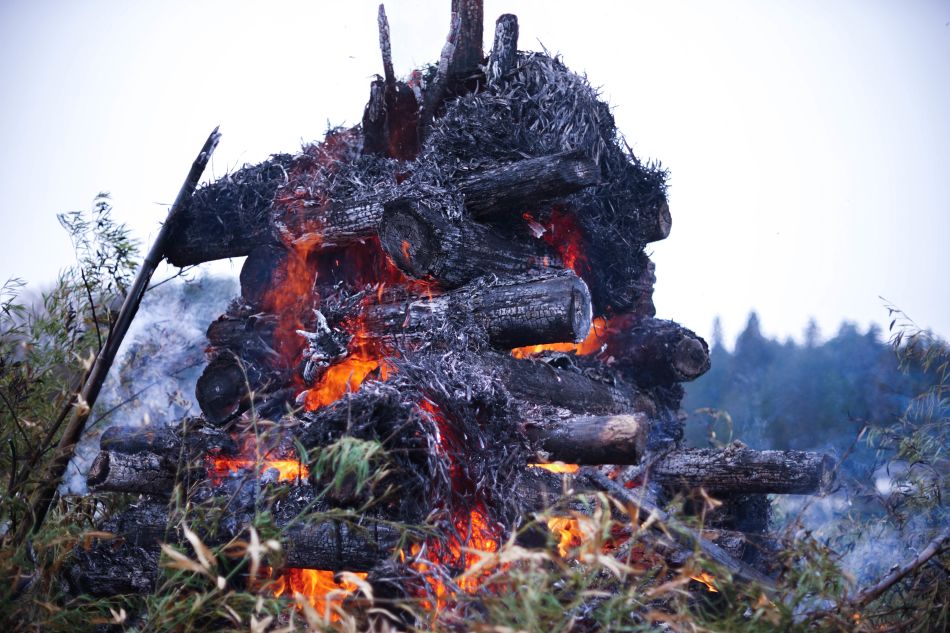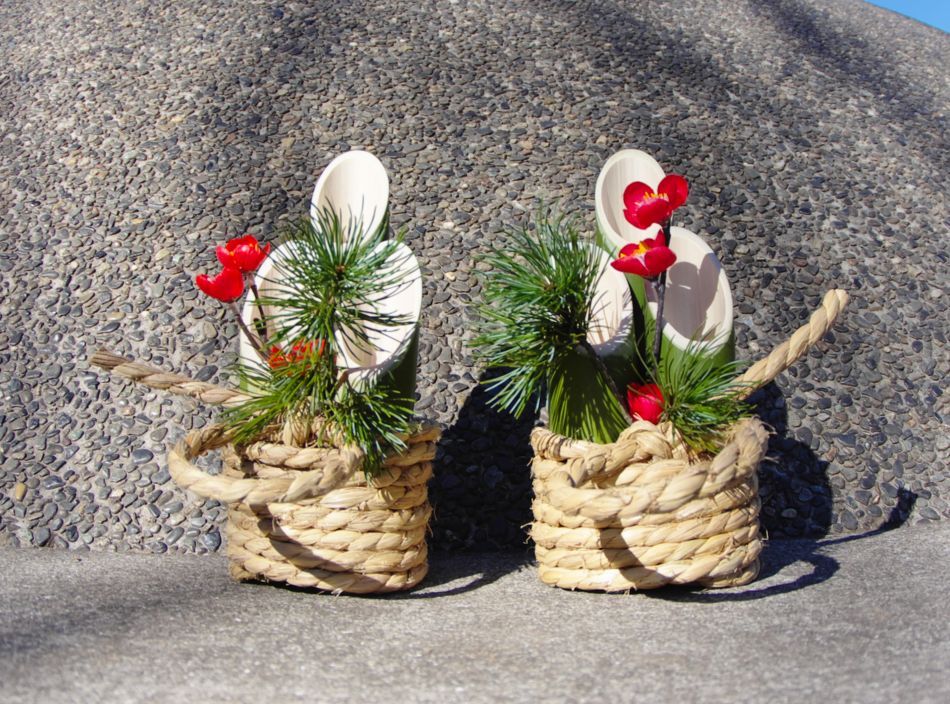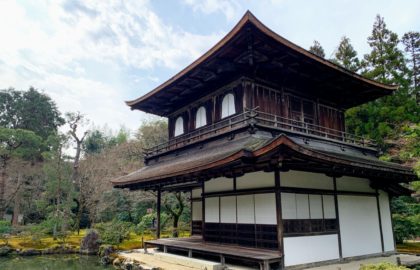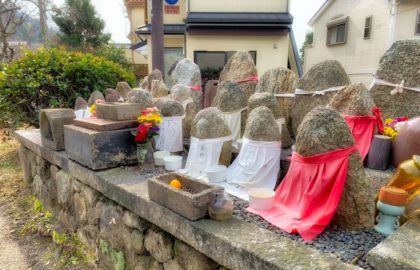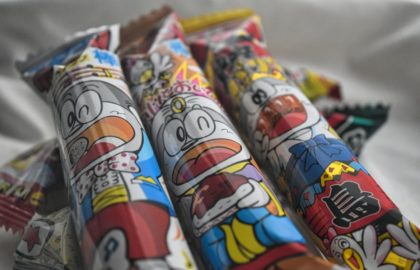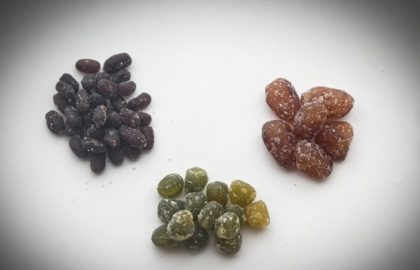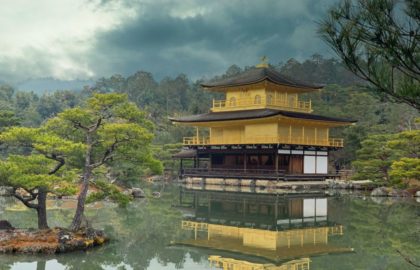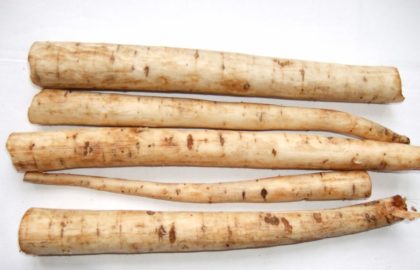門松
Kadomatsu
“Gate Pine”
Japan loves its New Year’s decorations. It’s reminiscent of western Christmas decorations, something to bring verdant cheer to grey winters.
Just after Christmas, the New Year’s decorations known as kadomatsu “門松 – Gate Pine” are placed in front of homes, department stores, and businesses. It’s an evergreen ikebana arrangement that reminds me of Yule Tide Garlands. Kadomatsu can be spotted nearly everywhere up until January 13th.
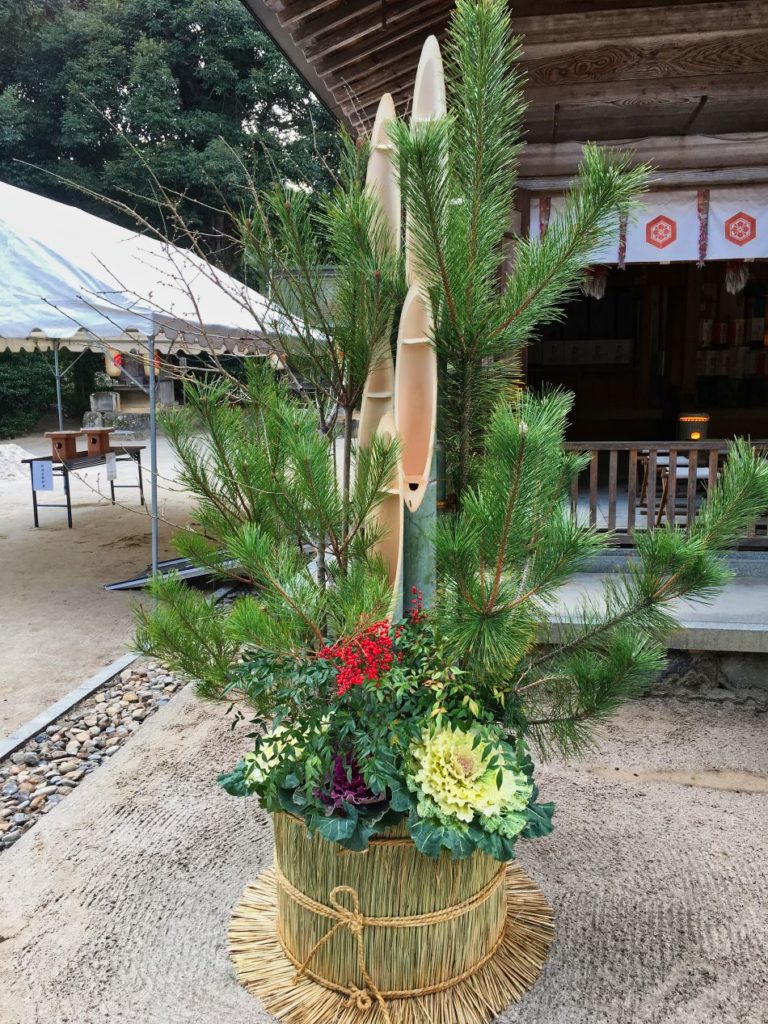
松竹梅
Shochikubai
“Pine, Bamboo, and Plum”
Shochikubai originated from China, where it’s commonly known as 岁寒三友 (Suihan Sanyou) or “Three Friends of Winter.” Koreans and Vietnamese also share a similar New Year art motif. But in Japan, it’s specifically known as Kadomatsu. Hawaii also loves its kadomatsu given its communities of Japanese descent.
These three symbols represent longevity (pine), prosperity (bamboo), and steadfastness (plum). Not only are they found as decorations on doorways, but I’ve seen them on greeting cards and embossed into winter confections.
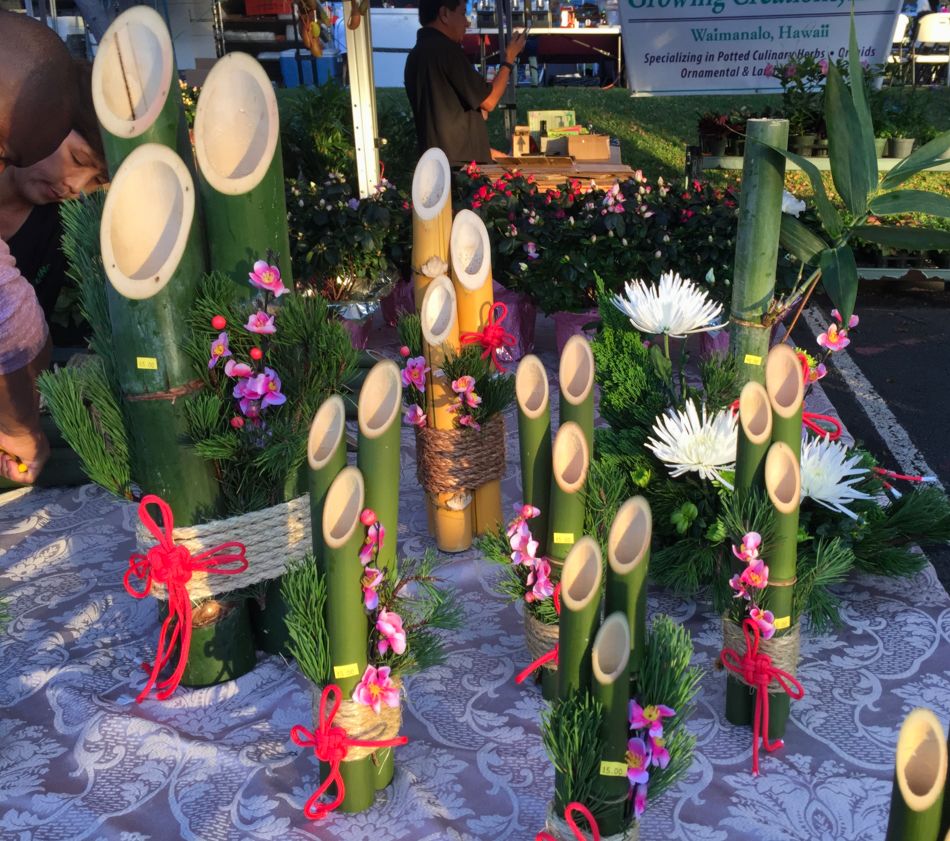
Kadomatsu come in all sizes, but the basics are the same: three stalks of bamboo cut on the diagonal at various heights standing vertically. Pine branches are arranged around the bamboo and then twigs of plum blossoms are inserted. Sometimes they are bound together using a straw or rope. Kadomatsu are always found in pairs, on either side of the entryway and embody the male and female genders.
Originally, kadomatsu were placed to honor and receive the toshigami (deity), who will then bring a bountiful harvest. Today, they are symbols of good luck, wishing a bountiful year to the residents and the users of the building.
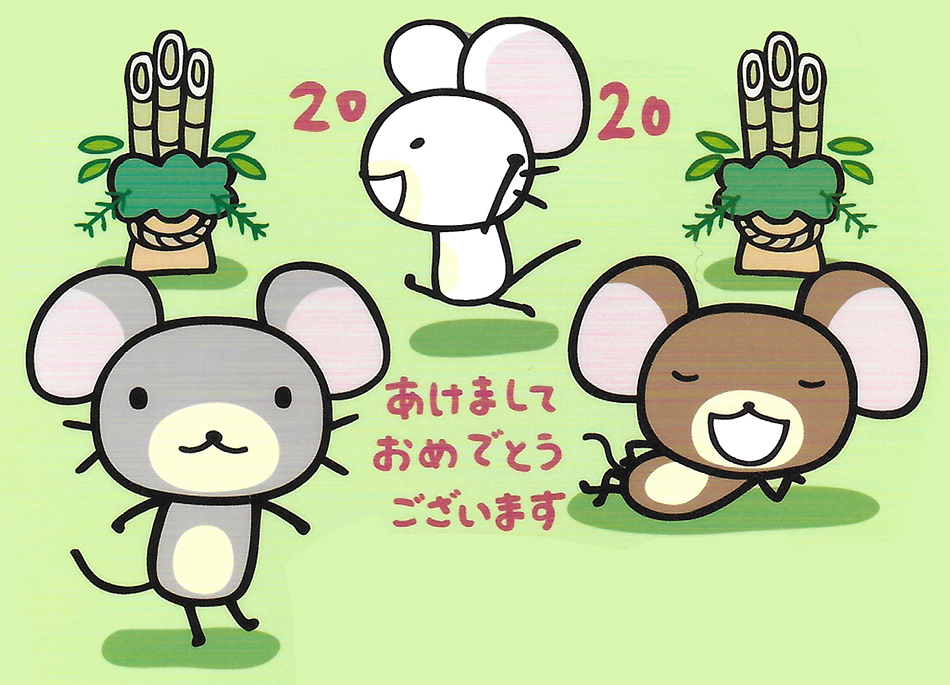
Sagichō
左義長
When the holidays are done, the decorations in America are tucked away in boxes to be saved for next year. Here in Japan, Kadomatsu and other decorations are burned on a special holiday season called “Little New Year’s” also known as Koshogatsu.
On the night of January 14th and the morning of January 15th, kadomatsu, other New Year’s decorations, and old lucky talismans are ritualistically burned in a Shinto ritual called Sagichō (not to be confused with the famous Omihachiman Sagicho Fire Festival near Kyoto). The festival also has many other regional specific names including tondo, dondo-yaki, saitōyaki, bokkengyō, and sankurōyaki.
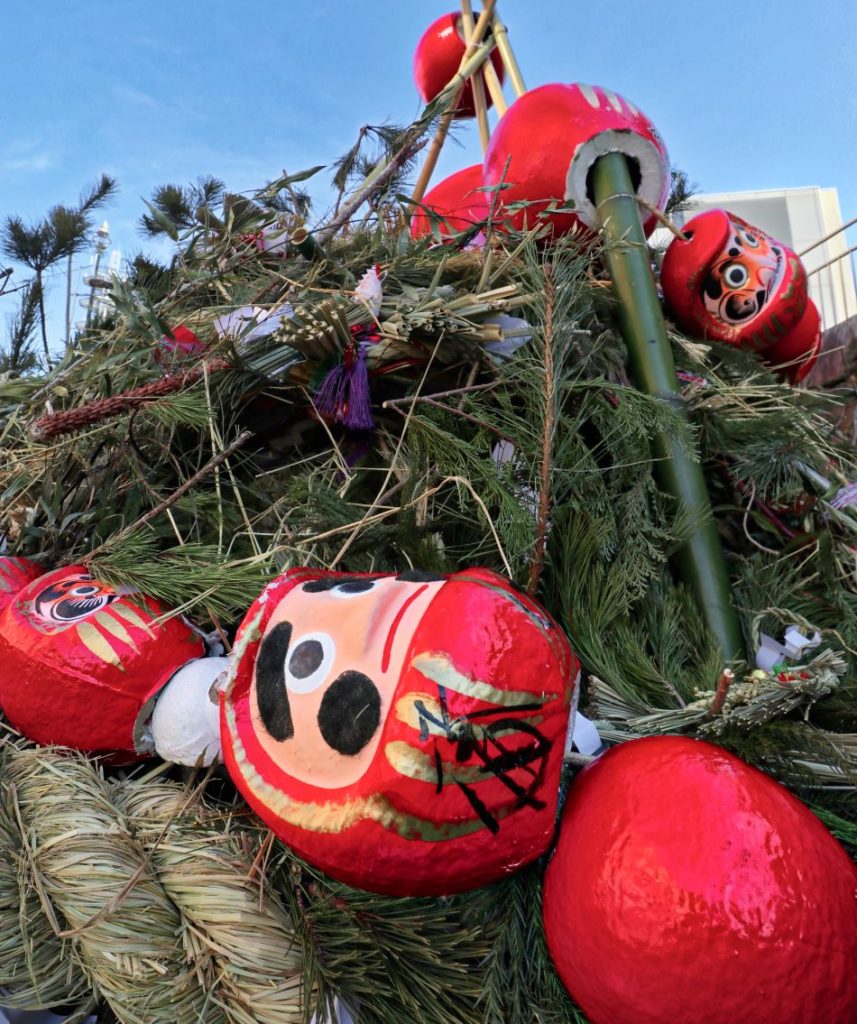
Regardless of its name, they all have one thing in common: The building, stacking and burning the New Year’s door ornaments and charms of luck, usually at a location near the village border or in a field. It’s mostly a family event with an intricate spiritual significance. The burning of the charms represents breaking up with the past and showing a desire to turn forward toward progress. Sometimes a short ritual is performed beforehand, but they always roast mochi or rice cakes over the fire for everyone to enjoy.
